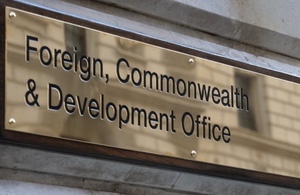- Government proposes new cap to ensure legal costs for lower value clinical negligence cases are proportionate and fair
- Patients will be prioritised with a new streamlined process to secure faster resolutions
- Proposals could save the NHS half a billion pounds over the next ten years
The government is launching a consultation to protect NHS funding by tackling increasing and disproportionate legal fees for lower value clinical negligence claims.
The proposals would bring legal costs more in line with the amount of compensation being awarded for lower value claims. These are typically worth between £1,001 and £25,000.
The plans would only affect the legal costs that people making claims and their lawyers can recover following a successful claim, not the amount of compensation that patients would receive.
In recent years the overall cost of clinical negligence claims has risen significantly, and the National Audit Office (NAO) has identified the legal fees of people making claims as a significant factor.
These claimant legal costs are currently more than four times higher on average than defendant legal costs for lower value claims.
One reason for this is there is currently no limit on the legal costs that can be claimed by lawyers. It means these costs are, on average double the compensation received by patients for lower value claims. In one case, lawyers claimed £72,000 in legal costs for a case in which the patient was awarded £3,000.
This takes vital funding from the NHS frontline as it continues to tackle the backlogs that have built up during the pandemic. It is estimated these proposals could save nearly half a billion pounds over the next ten years.
Although overall clinical negligence costs have risen sharply, the National Audit Office (NAO) has recognised that this does not appear to be due to any decline in patient safety, which has been and remains a top priority for both Government and NHS.
Minister for Patient Safety Maria Caulfield said:
I’m committed to making the NHS the safest healthcare system in the world. When harm does occur, it’s essential the NHS learns from what went wrong, and people who have been negligently harmed are entitled to claim compensation.
Unfortunately, we are seeing some law firms profiting at the NHS’ expense through legal costs that far outweigh the actual compensation awarded to patients. This diverts resources from the NHS frontline as staff work hard to tackle the COVID-19 backlogs.
Our proposals will cap legal costs for lower value claims to ensure they are fair and proportionate, and ensure patients’ claims are resolved as swiftly as possible without reducing the compensation they deserve.
The government is also consulting on a new streamlined process to ensure claims are processed more quickly, ensuring faster resolution and reducing the need to go to court. This includes assigning claims to two tracks according to their complexity and including two resolution stages within the process to encourage agreement and minimise delay, cost and distress, including a stocktake meeting between parties and a neutral evaluation by a barrister.
The proposals follow Sir Rupert Jackson’s (then Lord Justice Jackson’s) 2017 recommendation that the Civil Justice Council (CJC) develop a bespoke, streamlined system of fixed recoverable costs. Their report was published in October 2019.
Today’s consultation is closely aligned to the CJC’s recommendations and takes into account the responses to DHSC’s previous 2017 consultation.
The overall cost of clinical negligence in England rose from £582 million in 2006/7 to £2.2 billion in 2020/21, representing a significant burden on the NHS. For all claims, legal costs have increased more than fourfold to £433 million since 2006/7.
The government has committed to address these unsustainable costs and is working closely with the NHS on proposals.
Alongside this effort, the government and NHS continue to undertake world-leading work to improve patient safety, for example:
- The first National Patient Safety Strategy for the NHS was published in July 2019 and updated in February 2021, to address the learning from the COVID-19 pandemic, and to act to reduce patient safety inequalities.
- The government is investing £9.4 million to pilot interventions aimed at reducing brain injuries during birth, which account for around half the costs of clinical negligence, although these claims would not be impacted by the proposals being announced today.
- The NHS is investing an additional £95 million in maternity services to recruit 1,200 midwives and 100 consultant obstetricians. The fund will support training, and development programmes, improve culture and leadership, and strengthen assurance and monitoring on maternity safety issues so that we identify and learn from problems earlier.
